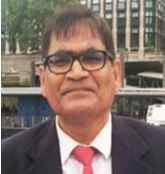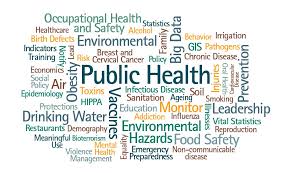 Prof. Satya Narayan Misra in Bhubaneswar, March 1, 2022: As women prepare to celebrate women’s day on 8th March, with the theme this year, “Breaking The Bias” and “taking action for equality”, one is reminded of the Beijing Declaration in September 1995 which aimed at advancing the goals of equality, and Convention on Elimination of all forms of Discrimination against women (CEDAW) (1979), which is like International Bill of Rights for Women.
Prof. Satya Narayan Misra in Bhubaneswar, March 1, 2022: As women prepare to celebrate women’s day on 8th March, with the theme this year, “Breaking The Bias” and “taking action for equality”, one is reminded of the Beijing Declaration in September 1995 which aimed at advancing the goals of equality, and Convention on Elimination of all forms of Discrimination against women (CEDAW) (1979), which is like International Bill of Rights for Women.
The Indian Constitution frowns upon gender discrimination and implores upon the State to make special provisions for women, (Art 15(3)). Besides equal pay for equal work (Art 39(d), maternity relief (Art 42) and renouncing practices derogatory to the dignity of women (Art 51A (e)) are part of the constitutional construct to usher in a gender just, sensitive society. However, the reality demonstrates a wide chasm between precept and practice, rhetoric and reality.
The Gender Inequality Index (GII) is generally considered the most definitive template for measuring gender inequality, which takes in to account Maternal Reproductive Health, Parliamentary representation and Female Work force participation. The Human Development Report (HDR) -2020 has calculated India’s GII to be of the order of .488, with 123rd place out of 162 countries.
This is largely because of poor Parliamentary representation (11.6%), abnormally high maternal mortality rate (174 out of one lakh) and very low women participation in the workforce (23.5%) as against 81.6% for men. In contrast, China has reduced gender inequality to .16, largely because 61% women participate in the labour workforce and the mortality rate is 27 per lakh.
I n the latest Global Gender Gap Report, India has slipped in its position from 112 in 2020 to 140 out of 156 countries. It notes with concern how in terms of female workforce participation it has come down from 24.8% (2020) to 22.3% now. The largest disparity between men and women is in terms of political empowerment.
n the latest Global Gender Gap Report, India has slipped in its position from 112 in 2020 to 140 out of 156 countries. It notes with concern how in terms of female workforce participation it has come down from 24.8% (2020) to 22.3% now. The largest disparity between men and women is in terms of political empowerment.
It laments how out of 149 heads of states, only 17 are women and 34% women hold top managerial position. Surprisingly the report also brings out how only 22% of Artificial Intelligence profession are women. Given the fact Industry 4.0 is the way forward for skilled employment, involving extensive use of Artificial Intelligence (AI), robotics, machine language and IOT, such yawning digital divide between men and women is really worrisome.
In response to the constitutional mandate the Indian state has embarked upon a number of programs like Integrated Child Development Scheme, Poshan, Ujjwala, Matru Vandana to improve nutrition, curtail anaemia, and provide smoke free cooking fuel and financial support during pregnancy and child birth.
However, the Rapid Survey of Children Report by UNICEF (2014) has brought out how only 1/3rd of the girls were found to be of normal health, while severely thin and thin girls accounted for 62%. The recent NFHS Report (2020) has brought out how more than 50% of adolescent girls are anaemic as an All India average. Surprisingly infrastructural robust states like Gujrat are home to 65% anaemic adult girls. This has serious implication on Infant Mortality Rates, as anaemic mothers would be prone to such debilitation during child birth.
The Ujjwala Yojana has been a landmark decision by the government which envisaged substitution of traditional cooking methods like firewood and biomass with gas connection. Around 30 million BPL families have been benefitted by it. However, the distressing message from this programme is that only, 40% have taken a repeat refill and have gone back using firewood and biogas.
This clearly shows that without assured income and employment of BPL families, this scheme will be unsustainable. Another wonderful scheme unveiled by the government has been the Matru Vandana Yojana, which envisages a cash transfer of Rs.5000/- based on milestones like conception, pregnancy and delivery.
The Parliamentary Standing Committee has noted that given the size of expecting mothers, which is around 19 million a year, allocation of Rs.24000/- cores would be necessary as against which the allotment has been only Rs.2500/- cores.
During the present pandemic out of an allotment of Rs.2700/- cores only Rs.13000/- crores have been used during 2020-21. Prof. Jean Dreze in his Jaccha-Baccha survey has brought out how only 23% have received the monetary benefit. The major reason for such non disbursement of cash benefit has been the tedious application process and bureaucratic red tape.
 Amidst the all-pervading health scare, the role of the 9 lakh ASHA workers has been salutary. These health warriors are part of NRHM (2005) scheme, which would facilitate access to health care facilities, depot holder for essential medicines and treating minor ailment and creating health awareness. A field study has revealed that only 62% had gloves and 25% no mask.
Amidst the all-pervading health scare, the role of the 9 lakh ASHA workers has been salutary. These health warriors are part of NRHM (2005) scheme, which would facilitate access to health care facilities, depot holder for essential medicines and treating minor ailment and creating health awareness. A field study has revealed that only 62% had gloves and 25% no mask.
Despite such severe constraints they have been the flag bearer in distributing iron tablets, checking immunisation schedule, creating awareness for prevention of Covid and the Samaritans to reach the expecting mothers to nearby dispensaries. A report from the Niti Aayog reveals how in terms of skilling like engineering trade, only 4% women are trained as against 40% men.
As the foregoing would show, in critical pillars of women empowerment like adequate nutrition for adolescent girls in poor families, maternal reproductive care, their participation in labour force as equals, skilling and representation in legislative process, India shows a very disturbing trend. We took a watershed decision by reserving 33% seats for women in PRIs.
Most of the findings show that women have been playing a very pioneering role in furthering education, access to drinking water and health care as representatives of such grass root level democracy. Sadly, such reservation for women in states assemblies and Parliaments is caught in the cobweb of OBC caste politics.
Gender budgeting which was unveiled by Chidambaram in 2005-06 has remained an act of tokenism.The q With 3% of the budget, no representation of women in the process of district level planning, it has made very little impact in galvanising women specific programs. The quest for gender parity and equality would need significantly more political representation of women in legislatures and the Parliament.
Prof. Misra teaches Constitutional Law & Economics. E.mail-misra.sn54@gmail.com, Ph-7381109899



Leave a Reply
Be the First to Comment!